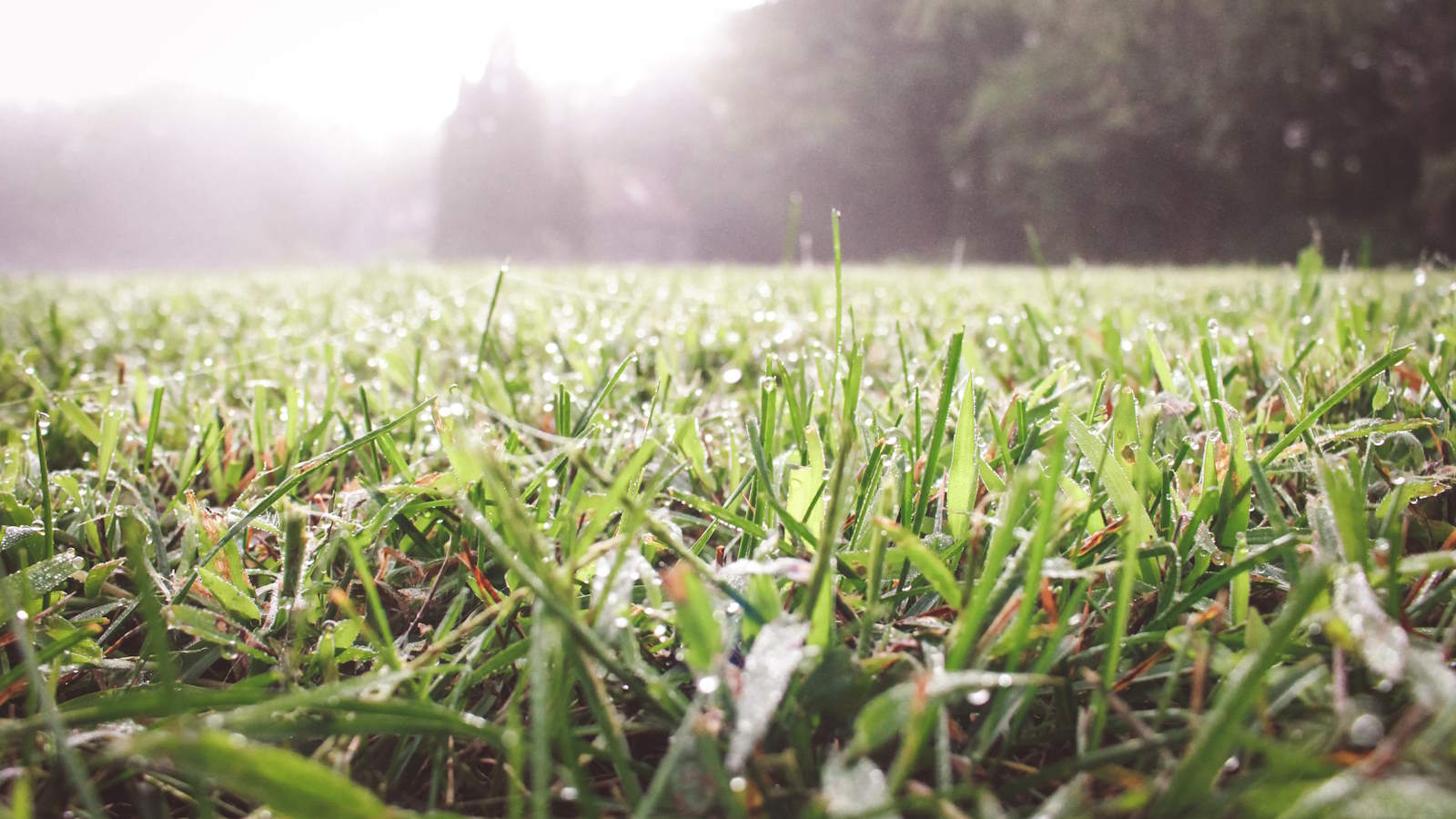
Red thread disease is a very common lawn disease in many backyards. It is a troublesome fungal disease that may not completely kill grass but does leave problems in its wake through the creation of patches in the lawn.
If you spot dead-looking patches of grass with a distinctive reddish-hue coloring after periods of moist and humid weather, there is a strong chance it may be red thread disease.
Even if you do spot the tell-tale signs of red thread, it need not be a massive headache. Some simple lawn care tasks can combat the issue if it arises and establishing a good care routine for your grass may prevent the red thread disease from returning.
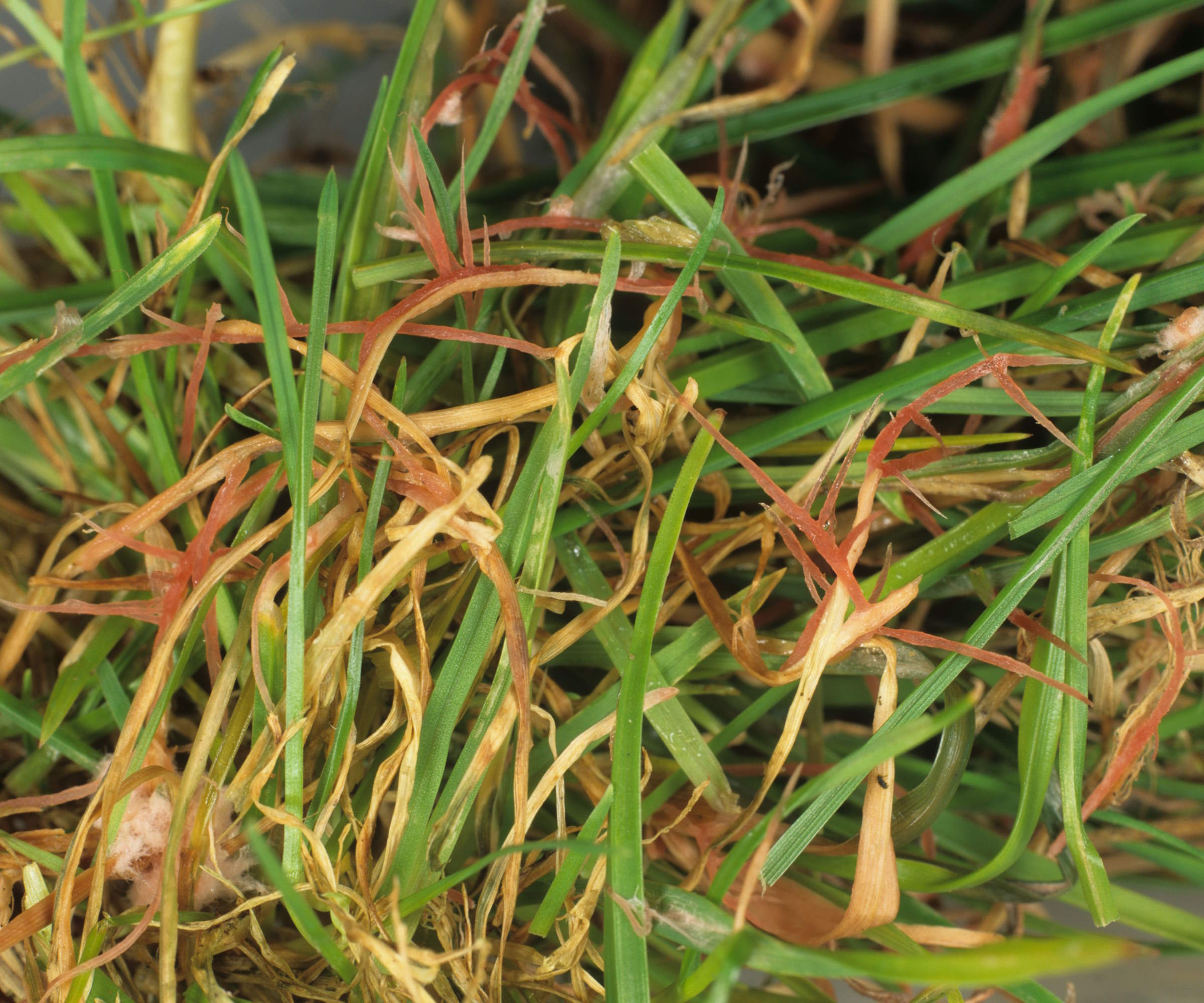
What is red thread disease?
Red thread is a frequent lawn disease caused by the fungus Laetisaria fuciformis. It can affect all species of grass, however, finer-bladed species such as fescue and bentgrass are more susceptible to the fungus. Red thread can create discoloring and patches in the grass, though the damage is not often fatal and the lawn can be remedied.
What does red thread lawn disease look like?
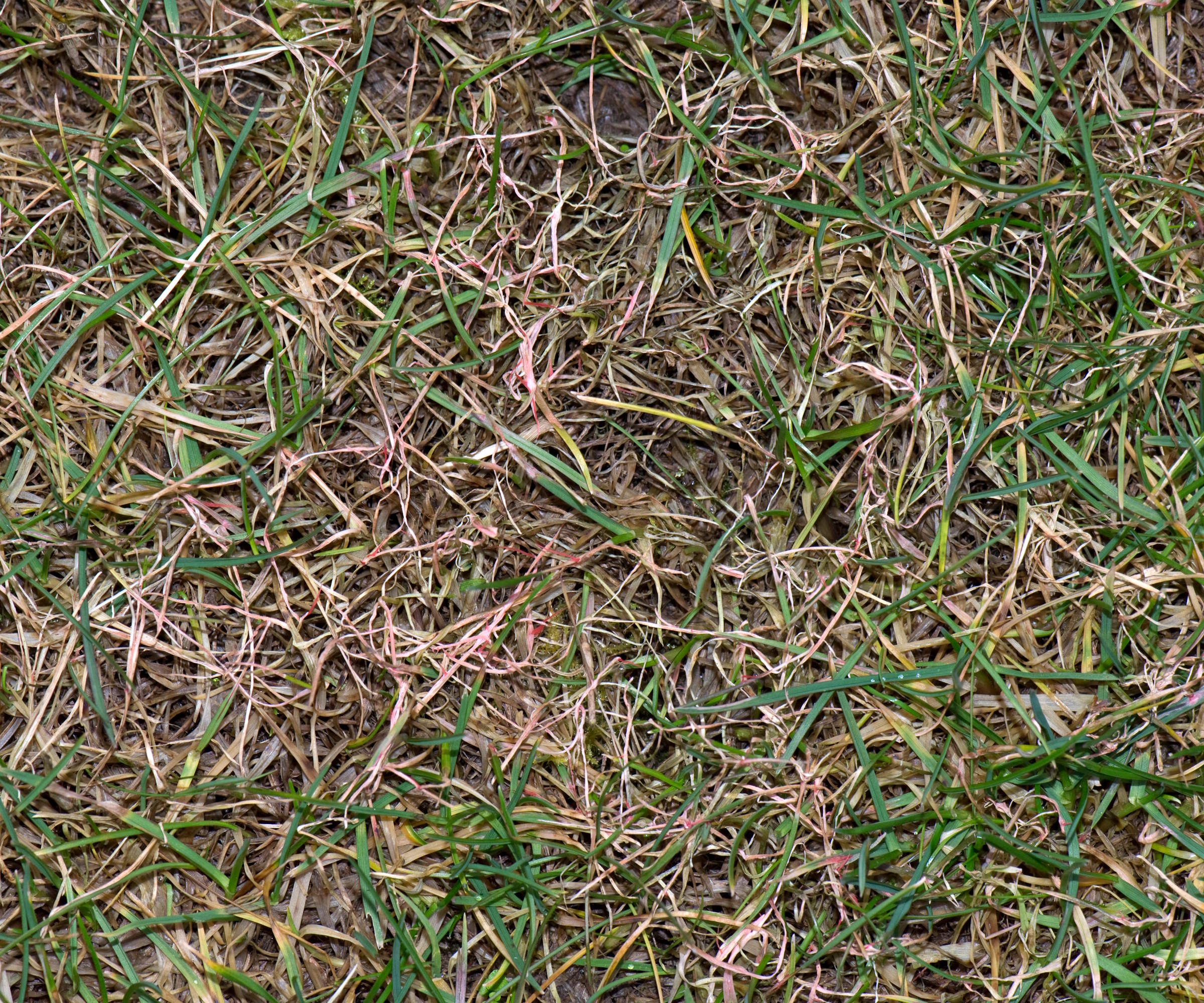
Red thread is an unsightly disease and will blemish an otherwise thick and green lawn. The first sign of the disease will be patches of straw-colored grass that, upon closer inspection, will have pink thread-like strands developing between the blades and the leaf tips.
The grass blades will start to turn a tan color, starting at the tip of the blades, and be followed by the red threads a few days later. The patches of affected grass may start small, but they can quickly grow much larger if left untreated.
Jeremy Yamaguchi, the CEO of Lawn Love, explains how there are two stages to this fungal lawn disease. He says: ‘In the first stage, red, thin needle-like strands extend from the grass blade. These strands are called stromata, and they infect the grass blade after germinating. Stromata can remain active in the soil for up to two years.
‘In the second stage, pink, fuzzy, web-like mycelium develops where grass blades meet. This stage occurs during wet and humid conditions. From a distance, red thread symptoms appear as pink or tan circular patches 1 inch to 2 ft in diameter. You may notice the patches contain a mix of healthy green grass and diseased grass that’s tan or white.’
Bare patches of grass can be the first signs of many fungal lawn issues, including dollar spot and summer patch, so make sure to closely inspect to identify the red strands to correctly diagnose red thread as the issue.
When is red thread disease most likely?
The fungus thrives in moist conditions. It is most common during the cooler and wet weather in spring and fall, though, it can also come to the fore during wet summers as it revels in the humid conditions. It likes temperatures of 60-77F and can strike any time that there is high humidity or when a lawn is stressed.
How to prevent red thread disease
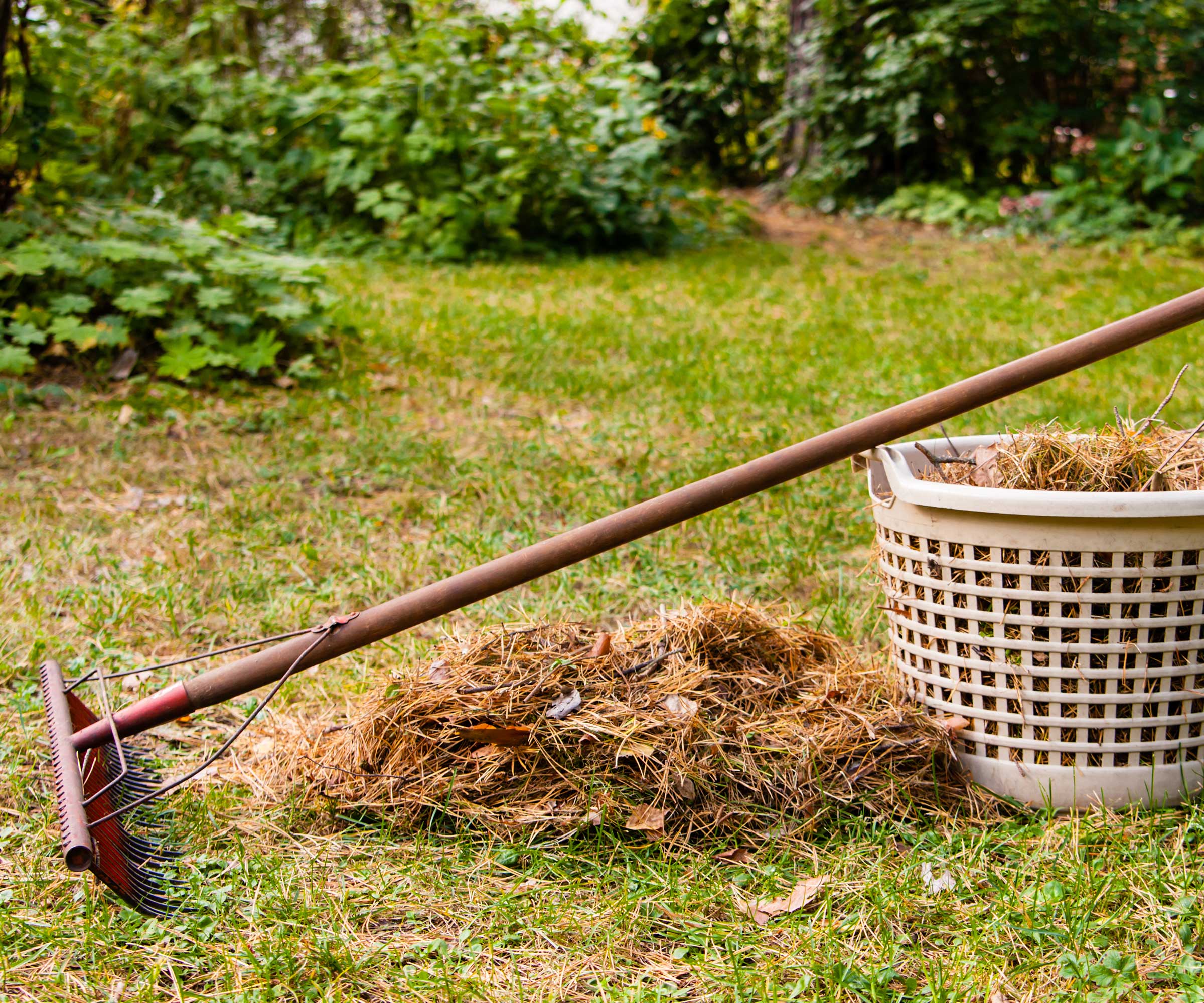
The key to avoiding red thread disease is limiting the factors that can help its development and avoiding stressing your lawn during the peak months when the fungus is prevalent.
Sal Musto, owner of SalCorp Landscaping, recommends ‘the best prevention is improving airflow by reducing thatch buildup’ and advises dethatching lawns as part of a spring lawn care regime.
Dethatching or scarifying - two terms for the same job, only different by how deep they go into the lawn - can remove lots of thatch, which increases airflow and also gets rid of material that can hold lots of moisture on the surface to create an ideal environment for the fungus.
Aerating lawns in spring and fall is recommended by Scott McLeod, the owner of McLeod Landscaping. This process will improve the drainage and airflow through the lawn and prevent it from sitting too wet for long periods, which can be favorable conditions for the red thread fungus.
Both lawn care experts also advise feeding the lawn with nitrogen fertilizer in spring to strengthen the grass, as lawns lacking in nutrients can be more susceptible to infection.
However, Ryan Farley, CEO of LawnStarter, warns: ‘In my experience, if you live in an area with tons of rainfall and very wet summers for instance, it can be difficult to control conditions enough to prevent this disease altogether.
‘However, things like dethatching your lawn before rainy periods can help promote proper drainage and prevent moisture from building up.’
During the season itself, avoid mowing the lawn too short as this can stress the grass and leave it more vulnerable to many diseases, including red thread. Dethatching, aerating, and fertilizing a lawn should be carried out in both spring and fall as part of a well-rounded lawn care regime to keep it healthy and strong against diseases.
Treatment for red thread lawn disease
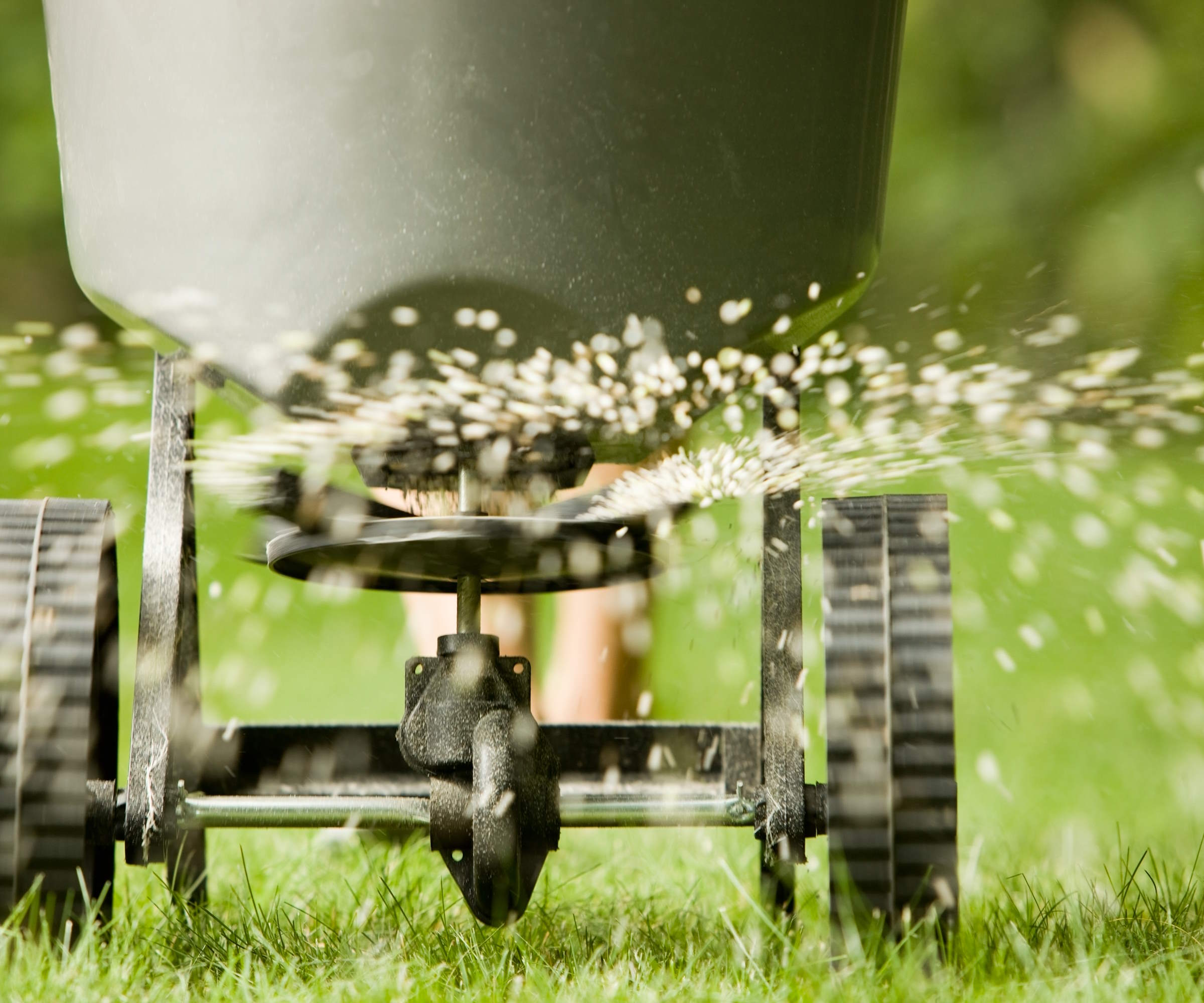
Prompt action after identifying red thread disease can help prevent the problem from spreading and treat the issue effectively. Dethatching and aerating the lawn can help to manage the spread by fixing factors that allow it to develop, but always dispose of the removed thatch and don’t use it to make compost.
Lawn experts recommend using a nitrogen-rich fertilizer for a speedy recovery. Feeding the lawn can give it the nutrients required to control and beat the red thread fungus. However, if the outbreak occurs in the fall, do not feed with lots of nitrogen as this will encourage lots of growth that can be susceptible to snow mold during winter.
Fungicide can be applied to the lawn to manage the red thread, though this needs to be done in conjunction with other measures to improve the underlying conditions that cause the disease. When you spray, it requires two or three applications applied 7-10 days apart to fully combat red thread.
Failing to stay on top of maintenance and correct the issues that resulted in the red thread likely means the lawn will continue to struggle with the disease again in the future.
A fungus control product that controls red thread along with brown patch, dollar spot, rust, and other listed lawn diseases for up to a month.
A lawn feed that has 70% quick-release nitrogen for quick nutrient absorption and 30% slow-release nitrogen to feed in between applications.
An adjustable lightweight and durable metal lawn rake that is ideal for dethatching your grass and removing lots of troublesome thatch.
FAQs
Does red thread go away on its own?
Red thread does not completely kill grass and its roots, but it can spread and leave unsightly patches on any lawn. The fungal disease can go away without the need for spraying chemicals, but it does require work to be done to create an environment where healthy grass thrives in ideal conditions and the red thread disappears as a result. This means having a good programme of mowing, aerating, dethatching, and feeding.
Any bare patches in a lawn as a result of disease problems can be quickly filled by planting grass seed. See our guide to overseeding and discover a step-by-step guide to fixing these patches using fast-growing grass seeds.







